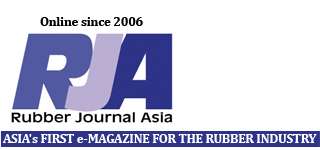 SPECIALITY chemicals company Lanxess expects a boost in demand for high-performance rubbers due to the European Union tyre labelling legislation that comes into effect in 2012 as well as an impending one in South Korea. This it says should spur demand for its materials and it forecasts a higher growth of 20% this year.
SPECIALITY chemicals company Lanxess expects a boost in demand for high-performance rubbers due to the European Union tyre labelling legislation that comes into effect in 2012 as well as an impending one in South Korea. This it says should spur demand for its materials and it forecasts a higher growth of 20% this year.
Chairman of the Board of Management of Lanxess, Axel C. Heitmann, speaking at Rubber Day Germany in Dusseldorf, recently said because of the ongoing strong demand for synthetic rubbers, also used in winter tyres, Lanxess will increase its EBITDA pre exceptionals by roughly 20%. “The third quarter is going very well and will be better than the third quarter of last year,” he added.
The trend towards mobility is supported by internal market studies: According to the latest forecasts, around 2 billion tyres will leave the manufacturer’s production lines by 2015 compared with around 1.6 billion at present. This is an increase of some 25% for the tyre industry.
Because of the European Union tyre labelling initiative, the market share of ”green tyres” made of high-performance rubber will increase from its present 35% to around 50% of the overall tyre market.
In view of this, Lanxess says it is investing in R&D, which increased by 15% last year and by a further 15% this year to EUR130 million. Of this amount, some 80% is being invested in the company’s German sites. Since the beginning of this year, an additional 180 employees have been employed to work in R&D, increasing the total number to 700 worldwide.
The Group has considerably expanded its product portfolio for the rubber industry. This should allow tyre manufacturers to achieve, for example, the tyre properties specified by the European Union from November 2012. Tyre manufacturers are already taking action and are promoting summer and winter tyres that are geared towards the new standards.
In South Korea, too, there are plans to introduce compulsory labelling based on the EU-model in 2012. In Japan, a voluntary obligation by the industry to label tyres has existed since 2010, and regulations of this kind are currently under discussion in the US and Brazil. China is yet another country, where it is the subject of debate.
In view of this, Lanxess has significantly increased its production capacities for high-performance rubber at its sites in Dormagen in Germany, Cabo in Brazil and Port Jérôme in France. The company is also planning a new plant for high-tech rubber in Singapore. The new facility, which is scheduled to go on stream in 2015 at a cost of around EUR200 million, is the second-largest project of this kind since the company was founded.
With its Rubber Day in Germany, Lanxess is continuing the programme of events it began in 2009. The conference in Dusseldorf is the first of this year’s programme of Rubber Days, which will continue in Japan, South Korea and China. (PRA)
